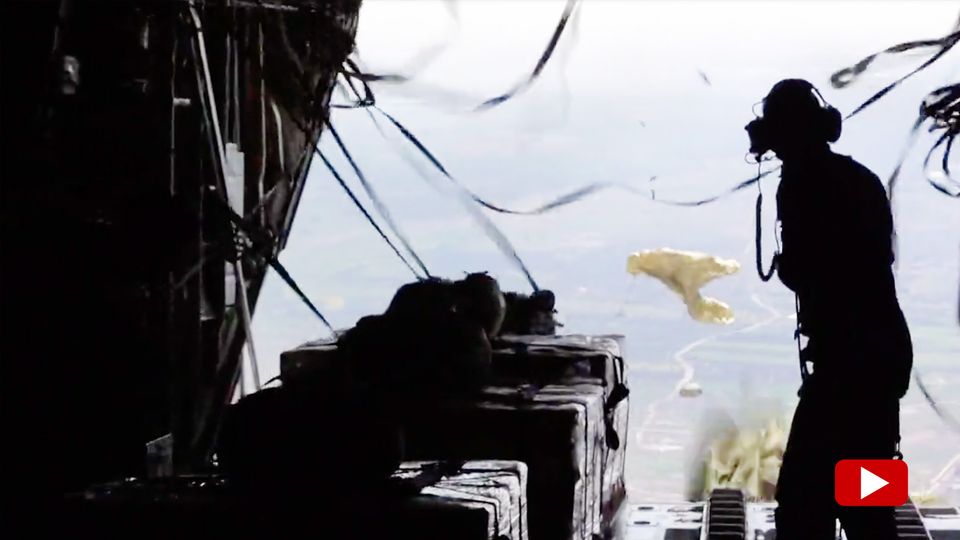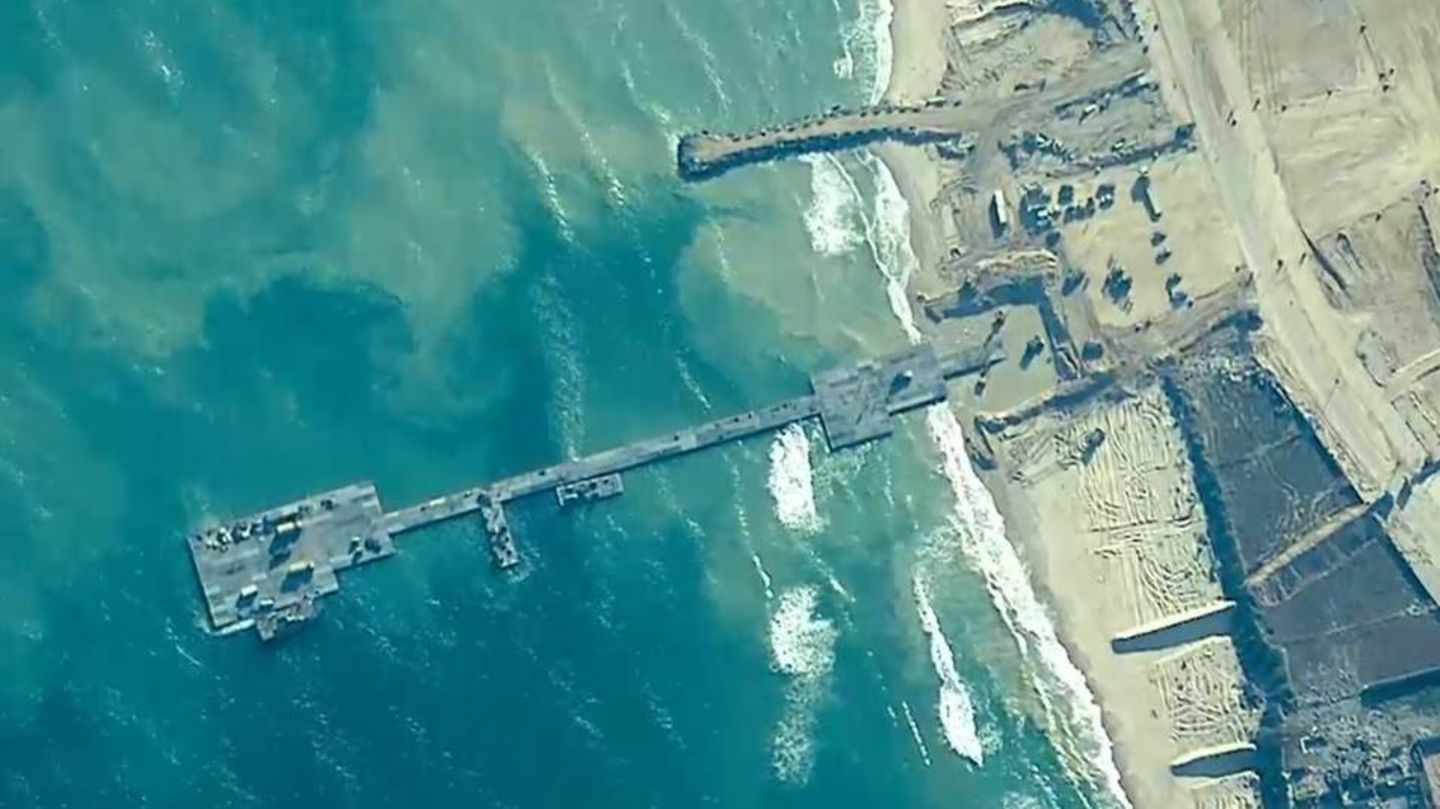A temporary port was supposed to help the starving population in the Gaza Strip – but the expensive project was plagued with problems. Now the US military is putting an end to it.
The USA is finally stopping the operation of a provisional port off the coast of the Gaza Strip. The mission has ended, the responsible regional command of the US military announced. An alternative route for the delivery of aid to the sealed-off coastal strip is planned via the port of Ashdod in Israel. However, details of this were not initially known.
The pier was intended as a temporary solution from the start. However, there have been repeated problems since it was put into operation in May. Rough seas had severely damaged the temporary pier on the coast of the Gaza Strip. The distribution of aid supplies for the suffering population in the Gaza Strip also proved to be extremely difficult.
The representative of the US regional command Centcom nevertheless tried to portray the project as a success. According to the US military, the pier had achieved the intended effect, “namely, bringing a very large amount of aid to the Gaza Strip and ensuring that the aid reaches the civilian population in the Gaza Strip quickly.”
Port off Gaza expensive and inefficient
Israel’s war against the Islamist Hamas has caused great humanitarian distress in the Gaza Strip for months. Trucks carrying aid supplies entered the Gaza Strip via the temporary port for the first time on May 17. The Pentagon estimates the cost of the port at around 300 million US dollars (276 million euros).
Expectations for the project were high: The Pentagon had originally assumed that around 90 truckloads per day would be able to reach the Gaza Strip via the port. At a later date, this figure was to rise to up to 150 truckloads per day.

How the airlift for Gaza works – Reporter accompanies aid flight
02:33mins
Freighters brought aid supplies from Cyprus to a floating platform a few kilometers off the coast of the Gaza Strip. The goods were then loaded onto smaller ships that could sail closer to the coast. These ships then docked at the pier on the coast, from where the supplies were to be received and distributed by aid organizations.
Aid organizations welcomed the construction of the facility, but pointed out that transport by land was much more efficient. The US government stressed that the corridor across the Mediterranean was not intended to replace aid deliveries by land and air, but merely to supplement them.
Source: Stern
I have been working in the news industry for over 6 years, first as a reporter and now as an editor. I have covered politics extensively, and my work has appeared in major newspapers and online news outlets around the world. In addition to my writing, I also contribute regularly to 24 Hours World.




